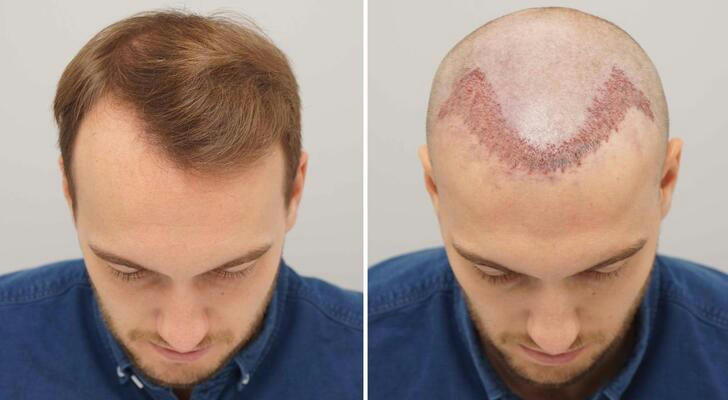The 5 Truths About Hair Transplant Surgery: What Doctors Might Not Tell You

As society places increasing importance on appearance, hair transplant surgery has evolved from a niche procedure to a mainstream cosmetic solution. With hair loss affecting younger demographics, many view transplants as a quick fix to restore their image and confidence. However, the reality of the procedure often goes unmentioned during consultations. Backed by concrete data and detailed protocols, this article reveals five critical truths to help you make an informed decision.
1. The Surgery Is Just the Beginning—Post-Op Care Is Crucial
Many patients mistakenly believe hair will grow immediately after transplantation. In reality, the process is more complex. Clinical data shows that about 70% of patients experience "shock loss" (temporary shedding) within 2–3 months post-op, with new growth typically visible after 6–12 months as follicles enter the active growth phase.
Step-by-Step Post-Op Guidance:
- Week 1: Focus on wound care. Gently cleanse with lukewarm water and mild shampoo, avoiding harsh chemicals.
- Month 1: Apply topical treatments like minoxidil, shown to improve graft survival by 15–20% (International Journal of Trichology, 2020). Avoid strenuous exercise and heat exposure.
- Months 3–6: Monitor progress and attend follow-ups. Oral medications (e.g., finasteride) may be prescribed to support recovery.
2. Donor Hair Is Limited: Supply Dictates Results
The donor area (typically the back of the scalp) provides finite grafts, with density ranging from 150–250 follicles/cm². For patients with donor density below 170/cm², outcomes may be compromised (Journal of Dermatological Surgery Research).
Key Considerations:
- Pre-op assessment: Surgeons use microscopes to measure donor density and plan extraction.
- Graft allocation: Most surgeries harvest 2,000–3,000 grafts, but those with limited supply may require multiple sessions.
- Realistic expectations: Patients must understand that transplants optimize appearance—they don’t restore a full head of hair.

3. Skill Trumps Technology: Experience Matters Most
Hair transplants are microsurgical procedures where surgeon expertise directly impacts graft survival rates:
- Top teams achieve >90% graft survival.
- Inexperienced practitioners may drop below 70% (Journal of Clinical and Aesthetic Dermatology, 2019).
Critical Steps for Success:
- Specialized training: Teams master extraction (FUE/FUT) and implantation techniques.
- Real-time monitoring: Grafts are checked for viability during placement.
- Follow-up protocols: Regular check-ins track progress and patient satisfaction.
4. Transplants Don’t Stop Underlying Hair Loss
Transplants relocate hair but don’t cure conditions like androgenetic alopecia. Studies show 60% of patients continue losing native hair at ~5% annually (Journal of the American Academy of Dermatology).
Long-Term Management:
- Combination therapy: Minoxidil/finasteride post-op to slow further loss.
- Scalp checkups: Density scans every 3–6 months to monitor thinning.
- Lifestyle adjustments: Diet, sleep, and stress management support follicle health.
5. Managing Expectations Is Half the Battle
Patient satisfaction hinges on realistic goals. Research reveals 55% feel disappointed if results fall short of expectations (Clinical Cosmetic Research).
Strategies for Alignment:
- Pre-op consultations: Use simulations and case photos to set achievable goals.
- Phased milestones: Frame progress as 3–6 month (initial) vs. 12+ month (final) results.
- Psychological support: Some clinics offer counseling to address post-op anxiety.

The Bottom Line
Hair transplants can transform appearances, but they’re not magic. Success depends on:
✅ Meticulous post-op care
✅ Donor hair limitations
✅ Surgeon skill
✅ Long-term maintenance
✅ Realistic expectations
Pro Tip: Always consult a board-certified specialist and review peer-reviewed data (e.g., International Journal of Trichology) before deciding.
Sources Cited:
- Journal of Dermatological Surgery Research
- Journal of the American Academy of Dermatology
- International Journal of Trichology
- Journal of Clinical and Aesthetic Dermatology
